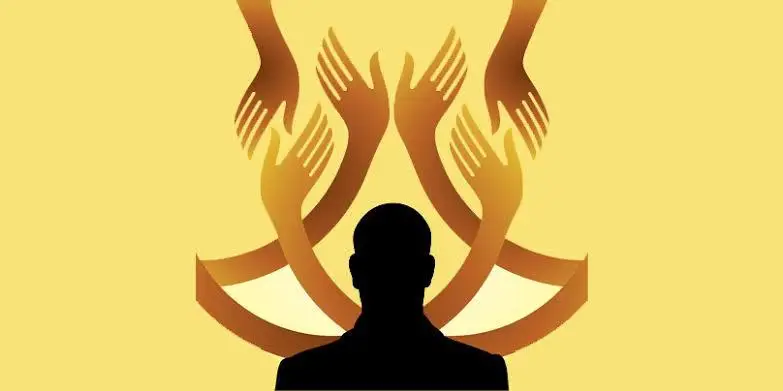‘Bharat to be a developed nation by 2047’
25-year roadmap to get there may be unveiled even as BJP-led Narendra Modi juggernaut gets ready to rollout seeking a third term K.A.Badarinath Twenty five years roadmap for turning Bharat into a modern, independent and developed economy with a large say in global affairs is the common theme that runs through both Presidential address at the start of Parliament’s budget session and economic survey for 2022-23. Both President Draupadi Murmu and Finance Minister Nirmala Sitharaman did the honours in the colonial era Parliament building as they reflected Prime Minister Narendra Modi’s resolve to roll out firm plans for Bharat in ‘Amrit Kaal’ spread over to 2047. Evolving a fully self-reliant country sans poverty, prosperous middle class with youth and women at forefront have been envisaged by the Modi government that will allow fulfilling all humanitarian obligations globally. Focus on ‘unity in diversity’ in Presidential address also marks yet another assertion from the government that Bharat will continue to cherish, embellish and groom all minorities by faith, worship and sections of a larger Hindu society. This may perhaps be intended at demolishing a false narrative being constructed by few global outlets that minorities in Bharat are being hounded out or subjected to genocide. The roadmap to achieve the ‘golden future’ may draw inspiration from Bharat’s glorious past, freedom struggle and 1.4 billion people’s resolve. This is the line pursued by Modi government as it readies to draw curtains on ‘amrit mahotsav’ that marks 75-years of Bharat’s independence after having pushed back colonial occupiers. Presidential address and economic survey fine print that outlines the blue print for a ‘developed country’ is nothing short of a grand stand vision for Bharat joining the big boys globally as a developed nation. Both the documents proudly declare Bharat as fifth largest economy that would expand to $ 3.5 trillion in two months. The federal budget to be presented on Wednesday by Nirmala Sitharaman may provide more clues or offer different specs to attaining the exulted status of a developed economy. Economic survey has already talked about achieving 10 – 12 nominal GDP growth in medium term as a commitment and objective to taking India big on world map as second or third largest economic powerhouse. Both Presidential address and the survey simultaneously articulated the nine years report card of Narendra Modi government’s performance across sectors. Given that BJP-led ruling alliance will have to face the electorate in May – June 2024 seeking a third term, this report card serves as a ready reckoner of what has been done during last nine odd years. Similarity does not end here. Presidential address lists out the government’s achievements in socio-economic sectors thereby improving people’s lives. Concomitantly, the survey provides a lengthy list of economic reforms and fundamental change in structural governance brought in by the Modi government. Bringing transparency and openness into public life may be yet another theme point apart from weeding out corruption at different levels. Corruption is the big plank on which BJP-led Hindu centric formation assumed power with complete majority for first time in 2014. On the reforms front, both President Murmu and Finance Minister Sitharaman have listed Goods and Services Tax (GST) as a big success story in tax reforms. While the states still have issues on GST, revenue sharing formula and several hurdles in ending the fake bills, the reform is definitely a game changer given that multitude of taxes have been phased out. Economic survey for the first time introduced a complete assessment of how peoples live changed owing to improvement in social sector indices. On the other hand, President Murmu reeled out figures to reflect the on-ground change brought about. For instance, in digitized economy, Bharat has reported Rs three lakh crore worth transactions on the e-market place. Similarly, over Rs 27 lakh crore have got transferred into bank accounts of the beneficiaries in 300-odd schemes through direct benefit transfers. Over 50 crore people have been treated under Ayushman Bharat scheme and accessed affordable medicines from 9000 jan aushadi kendras.This led to saving of over Rs 80,000 crore that could have been forked out by people on health treatment. Over 7.5 crore households have got access to tap water. Under what started as an anti-Covid 19 drive over Rs 3.5 lakh crore worth food grains were provided to the poor and needy. Rs 2.25 lakh crore distributed as support to farmers. Out of this, Rs 50,000 crore has gone to women farmers alone.Over 36,000 hamlets of tribals have virtually been adopted under a PM’s scheme. 500 blocks seem to have got a facelift as ‘aspirational’ campaigns. Over nine crore women have benefited through self help groups while 70 per cent of small borrowers from banks were women. President’s address provided another 100 such data points to support the Modi government’s articulation on bringing about ‘transformational shift’ in people’s lives. This also makes us believe that quietly, Modi government is getting into election mode especially after the two days national executive committee meetings of BJP held in New Delhi. On the global front, Modi government may speak on two issues prominently as a sovereign outfit and as president of G-20 as well as SCO. A peek into tomorrow’s budget may provide more clues to Modi’s big vision statement.



